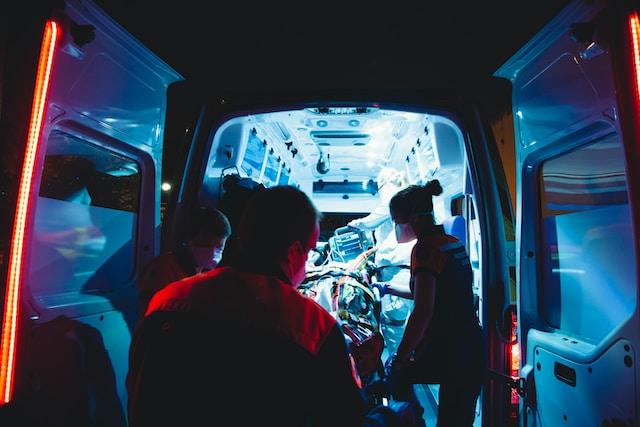How Technology is Changing the NEMT Industry
Non-Emergency Medical Transportation (NEMT) serves as a crucial link in the healthcare chain, connecting patients who lack suitable transport options with the medical services they require. It often caters to populations that are most in need—individuals with chronic conditions, seniors, and those without access to public transport. Yet, despite the pivotal role it plays, the NEMT industry has long faced various operational challenges, such as inefficient scheduling and excessively complex billing procedures. These difficulties often strain resources and compromise service quality.
The integration of technology into NEMT services is a necessary evolution that directly addresses many of the inefficiencies organizations in the industry face. By adopting NEMT software and other digital solutions, transport providers can streamline their operations, leading to improved efficiency, enhanced safety, and better patient experiences.
Understanding current technological advancements is one effective way that NEMT providers can achieve the excellent quality of service they strive for. This article aims to explore how specific technologies are providing groundbreaking solutions to age-old challenges in NEMT.
Improved Scheduling and Dispatch
Manual scheduling and dispatch have been long-standing issues in the NEMT industry. Before the advent of automated systems, dispatchers used to plan dispatches using paper maps and their best judgment, which often led to sub-optimal routes and longer patient wait times. Furthermore, last-minute schedule changes or unforeseen road conditions often threw the entire plan off balance, leading to delays and increased operational costs.
Enter the era of advanced scheduling software that utilizes intelligent algorithms to both plan and dynamically adjust routes. These systems use real-time traffic data and vehicle locations to optimize paths, ensuring that drivers can pick up and drop off multiple patients in the most efficient sequence. This approach reduces both fuel consumption and ride times, resulting in a smoother experience for patients and a more manageable workflow for service providers.
Real-Time Tracking and Notifications
Traditionally, the absence of real-time tracking created stress and uncertainty for patients and their caregivers. Without concrete information about the vehicle’s whereabouts, waiting for a ride to arrive often turned into an anxious experience. NEMT providers also had limited means to update the patients or healthcare facilities about any delays, causing frequent disruptions in planned medical appointments.
The adoption of GPS technology has revolutionized this aspect of NEMT services. Real-time tracking allows both the service provider and the patient to monitor the vehicle's exact location and estimated arrival time. Some systems have even integrated SMS notifications, where an automated message informs the patient of the approaching vehicle, thereby reducing anxiety and enhancing the overall experience. This technology also benefits NEMT providers by offering insights into driver behavior, helping to ensure compliance with safety standards and route protocols.
Automated Billing and Compliance
Billing and compliance can be frustrating and complex for NEMT providers. The complexity arises from the need to adhere to multiple state and federal regulations, including requirements specific to Medicaid and Medicare. However, this complexity, coupled with slow and error-prone manual billing processes, also often leads to billing errors that can have serious financial and legal ramifications.
Automated billing systems, on the other hand, are capable of managing many different billing scenarios. Such software also often includes built-in checks and reminders for regulatory compliance, thereby serving as both a facilitator for efficient billing and a safeguard against legal repercussions. With the adoption of these systems, NEMT providers can focus more on service delivery and less on administrative bottlenecks.
Enhanced Safety Measures
Historically, NEMT providers relied on driver training and vehicle maintenance checks to uphold safety standards. While these methods remain essential, technological advancements offer additional layers of safety that were previously unattainable. Traditional safety monitoring mechanisms, such as periodic vehicle inspections and driver reviews, were often unable to provide real-time data. This made it challenging for providers to intervene proactively in case of issues.
Thankfully, new technologies like in-vehicle cameras, telematics, and advanced driver-assistance systems (ADAS) are becoming increasingly integrated into NEMT services. These tools provide real-time insights into both vehicle and driver performance. For instance, in-vehicle cameras can record incidents, providing valuable information in case of accidents or disputes. Telematics, on the other hand, can monitor various parameters like speed, harsh braking, and sharp turns, enabling providers to identify and correct risky driving behaviors promptly. These technologies collectively contribute to creating a safer environment for both passengers and drivers.
Better Customer Experience
In the past, the process of booking an NEMT service was far from user-friendly, often involving multiple phone calls and extensive paperwork. Such complexities made it difficult for patients, especially seniors or those with cognitive impairments, to access services efficiently. This often resulted in missed appointments and, by extension, delayed medical care.
Technology is reshaping the customer experience through online portals and mobile applications. These platforms enable patients to easily schedule rides, review their booking history, and provide feedback, all at the touch of a button. For healthcare facilities that frequently book NEMT services for their patients, these platforms offer bulk booking and ride management features, simplifying what used to be a laborious task. The customer-centric features of these platforms not only provide ease and convenience but also empower patients to be active participants in managing their healthcare logistics.
The transformative power of technology in the NEMT sector is a paradigm shift that sets new standards for efficiency, safety, and patient satisfaction. For NEMT providers, resisting this wave of innovation isn't just unwise—it's untenable in an increasingly competitive industry. As healthcare moves forward into the future, the marriage of technology and NEMT services holds the promise of making accessible healthcare a sustainable reality.

